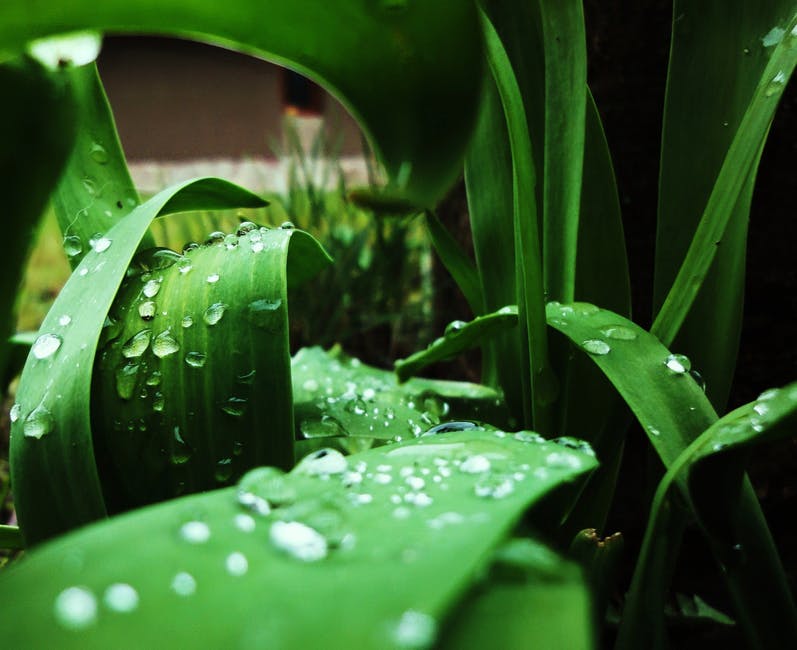
Do you look at your neighbor’s lush lawn over the fence and think that yes, the grass does seem greener on the other side? Well, growing green grass isn’t nearly as complicated as you might think! You simply need a to know a few tricks of the trade to give your lawn that green glow!

Identify Your Grass
You may have never given much thought to the type of grass you have growing in your lawn but if you want it to have that vibrant emerald hue, then you must know what type of grass you have.
There are two main types of grasses: warm-season and cool-season. While you might assume that all grasses require the same care, there is a difference in what you need to do for warm-season and cool-season grasses – and the biggest is mowing height. Mowing your grass within its ideal mowing height range will help to be more resistant to pests, drought, weeds, and disease – all while helping it to stay green.
The most popular types of cool-season grasses and their ideal mowing heights are:
- Kentucky Bluegrass -1.5 to 2.5 inches
- Tall Fescue – 2.5 to 3.0 inches
- Fine Fescue – 1.0 to 1.5 inches
- Ryegrass – 1.0 to 2.0 inches
Cool-season grasses are mostly found in states in the northern part of the country. They’re usually quite durable and will grow lush and green, even in the shade.
The most popular types of warm-season grasses and their ideal mowing height are:
- Bermudagrass – 1.0 to 2.0 inches
- Bahiagrass – 2.0 to 2.5 inches
- Centipedegrass –1.0 to 1.5 inches
- Augustinegrass – 2.0 to 4.0 inches
- Zoysiagrass – 1.0 to 2.0 inches
Found mostly in the south, these grasses can usually handle quite a bit of foot traffic, thriving in hot climates.
Aerate Your Lawn
Another key to green grass is to aerate it. What is aeration? It’s when you remove plugs of soil throughout your lawn in order to help promote growth and supply the roots of the grass with water, oxygen, and other much-needed nutrients. If you learn why grass is green in the first place, you’ll know that getting enough water is essential for that lush verdant color you want.
You can test your lawn to see if it needs aerating by taking a screwdriver and plunging it in about six inches. If you can easily push the screwdriver in, your soil is loose and letting nutrients get to the roots. If you can’t push it in easily – or if you’ve never aerated your lawn – then it’s time to aerate. The good news is you can use a lawn aerator or put an attachment on your mower to get the job done!
Fertilize Your Lawn
A great way to remember to fertilize your lawn is to create a schedule around the summer holidays. From Memorial Day to Labor Day with 4th of July in between, plan to apply fertilizer to your lawn. Make sure to find the right fertilizer for your lawn’s needs by doing a soil test to find out what it’s missing. Then, get a spreader to evenly apply the fertilizer. Make sure to follow the directions on the fertilizer exactly and water it every day for about a week after.
Water Your Lawn
Speaking of watering, if you want a green lawn, then you need to water it! An established lawn needs about an inch of water per week. If Mother Nature delivers that for you, then great! But if not, then set up a watering schedule to water deep. Early in the morning is best so the soil can absorb it while the sun dries the excess water from the grass.
Follow these steps and a beautiful lawn will be yours before you know it – and it’ll be your neighbor wondering how to make their grass greener!